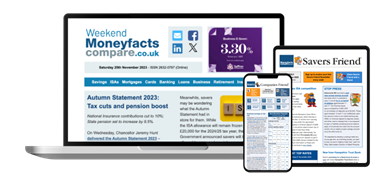The annual allowance
As you build your pension wealth through regular contributions, it is crucial to understand the pensions annual allowance.
The annual allowance is the maximum amount you can contribute to your pension in a single tax year without facing an additional tax charge. As of the 2023/24 tax year, and set to continue into 2024/25, it stands at the lower of £60,000, or 100% of your earnings, for most people.
For those earning an adjusted net income of £260,000 or more, the annual allowance is tapered down to a minimum of £10,000, depending on how much you earn over this threshold.
Importantly, at the time of writing, it is possible to carry forward three years’ worth of unused annual allowance. So, if you’re just starting to sort out your pension savings, you could make up for lost time in this way.
If you are able to, paying as much as you can into your pension within your annual allowance could help you to:
- Save more for retirement. Your pension is an essential cornerstone of your retirement security, so maximising your contributions within the annual allowance could be very beneficial.
- Pay less income tax. Your pension contributions are tax-deductible, meaning that increasing your pension contributions (as long as they remain within the annual allowance) could reduce your income tax bill.
- Invest tax-efficiently. Remember that a pension is a tax-efficient investment vehicle, just like an Individual Savings Account (ISA). Returns within your pension are not subject to income tax or Capital Gains Tax (CGT), so you could grow your wealth tax-efficiently within this handy tax wrapper.
- Ringfence money for inheritance. Personal pension pots and SIPPs are not usually subject to Inheritance Tax (IHT), as pensions are not generally considered to be part of your estate. So, contributing as much as you can into your pension each year could allow you to tax-efficiently ringfence funds for your beneficiaries.
- Receive government tax relief. You can usually claim tax relief on pension contributions made within the annual allowance. Your pension provider is likely to claim basic-rate relief automatically, but if you are a higher- or additional-rate taxpayer, you could claim the maximum relief through self-assessment each year.
No matter how much you earn, utilising your annual allowance to build tax-efficient pension wealth could benefit both you and your loved ones throughout your life.
If you are likely to have a tapered annual allowance, speaking to a financial planner could help you work out how much yours is likely to be, and what this may mean for your retirement savings.
Work with a Kellands financial planner to manage your pension as a self-employed high earner
While you may have plenty of information about building and managing your pension wealth at your fingertips, you could worry that you don’t have the time or resources to effectively save for retirement.
Indeed, our self-employed clients often reveal that they feel “time poor”, meaning that while they are earning plenty of money, they don’t have enough time for in-depth retirement planning.
That’s why working with a professional could come in handy. We understand that as a self-employed individual, saving for a secure future is entirely down to you – and our financial planners are here to help make this journey smoother and more successful at every stage.
Talking to an experienced financial planner about your pension could:
- Help you set up regular pension contributions. Paying into your pension sporadically could mean you lose track of how much you pay in each year and cause you to fall short of your retirement goals. We can help you set up regular contributions that serve your financial goals.
- Work out your ideal retirement age. Whether you run a business or work as a self-employed barrister, a Kellands financial planner will assist you in working out when you can retire. Once you know what your goal is, we can help you take the financial steps needed to afford a secure, comfortable retirement.
- Guide you through using your pension as a tax-efficient investment vehicle. With several tax thresholds set to either decrease or remain frozen in the 2024/25 tax year, paying attention to your tax bill is more important than ever. We’re here to help you form a tax strategy, including using your pension as a tax-efficient investment vehicle among other key mitigation steps.
- Offer much-needed peace of mind. Ultimately, it’s understandable that you may worry about retirement as a self-employed person. Our experts are here to assess your circumstances and help you make data-driven choices about your future.
It’s never too early to form a retirement plan, especially if you are self-employed. Email hale@kelland.co.uk, or call 0161 929 8838 to speak to an experienced financial planner.
Please note
This article is for general information only and does not constitute advice. The information is aimed at retail clients only.
All contents are based on our understanding of HMRC legislation, which is subject to change.
The Financial Conduct Authority does not regulate tax planning or estate planning.
A pension is a long-term investment not normally accessible until 55 (57 from April 2028). The fund value may fluctuate and can go down, which would have an impact on the level of pension benefits available. Past performance is not a reliable indicator of future performance.
The tax implications of pension withdrawals will be based on your individual circumstances. Thresholds, percentage rates, and tax legislation may change in subsequent Finance Acts.
Your pension income could also be affected by the interest rates at the time you take your benefits. The tax implications of pension withdrawals will be based on your individual circumstances, tax legislation, and regulation, which are subject to change in the future.
The value of your investments (and any income from them) can go down as well as up and you may not get back the full amount you invested. Past performance is not a reliable indicator of future performance.
Investments should be considered over the longer term and should fit in with your overall attitude to risk and financial circumstances.






